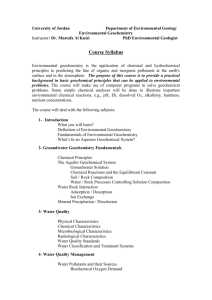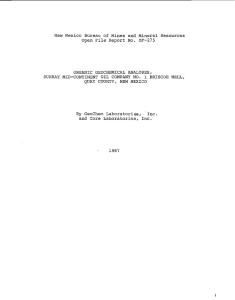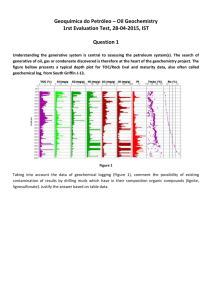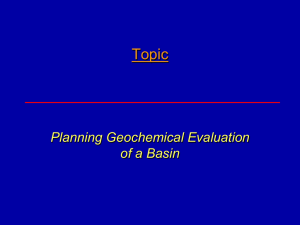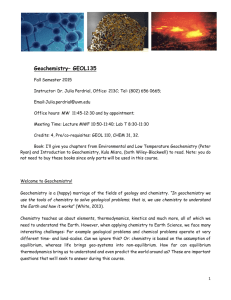IGR2012 Exercise 2
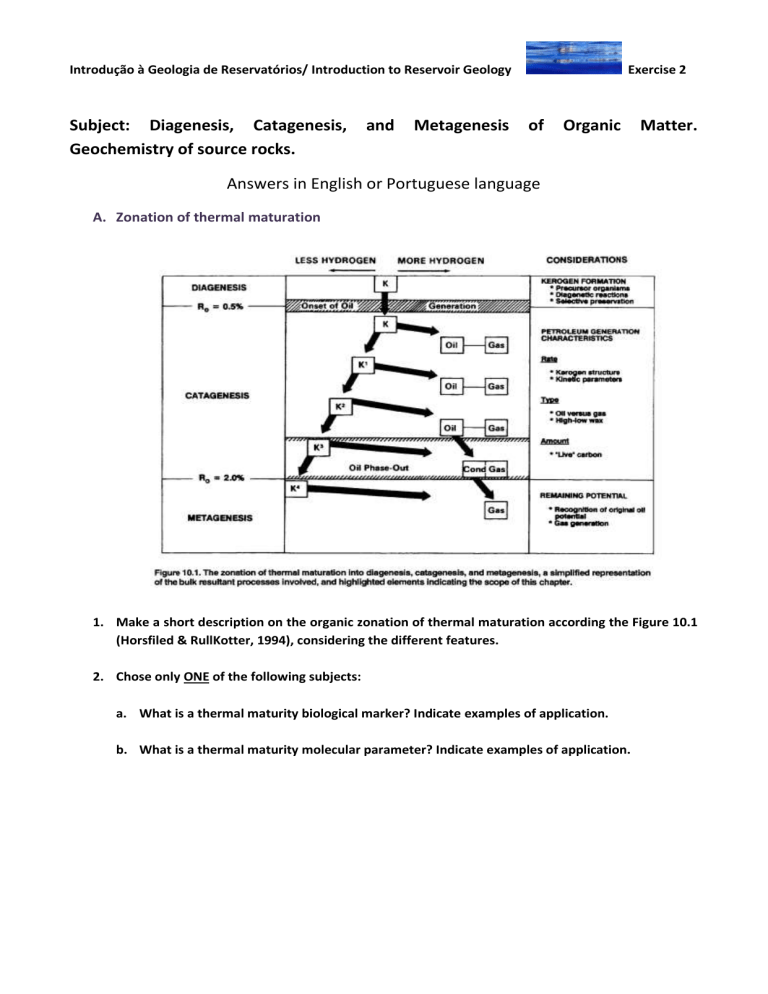
Introdução à Geologia de Reservatórios/ Introduction to Reservoir Geology Exercise 2
Subject: Diagenesis, Catagenesis, and Metagenesis of Organic Matter.
Geochemistry of source rocks.
Answers in English or Portuguese language
A.
Zonation of thermal maturation
1.
Make a short description on the organic zonation of thermal maturation according the Figure 10.1
(Horsfiled & RullKotter, 1994), considering the different features.
2.
Chose only ONE of the following subjects: a.
What is a thermal maturity biological marker? Indicate examples of application. b.
What is a thermal maturity molecular parameter? Indicate examples of application.
Introdução à Geologia de Reservatórios/ Introduction to Reservoir Geology Exercise 2
B.
Applied source organic geochemistry
Applied organic geochemistry provides the information needed to make maps of the richness, type, and thermal maturity of a source rock. These maps are a necessary step toward determining the stratigraphic and geographic extent of a pod of active source rock in a petroleum system, and they are based on geochemical analyses of rock samples from outcrops and wells that are displayed on logs.
These geochemical well logs are based on Rock-Eval pyrolysis, total organic carbon, vitrinite reflectance, and other rapid, inexpensive "screening" methods. The logs define:
(1) potential, effective, and spent petroleum source rock;
(2) thermal maturation gradient, including immature, mature, and postmature zones;
(3) in situ and migrated petroleum shows.
Useful geochemical logs require proper sample selection, preparation, analysis, and interpretation. Detailed studies, including oil-source rock correlations by biomarker and supporting techniques, are undertaken on selected samples only after the screening methods are completed.
in Applied Source Rock Geochemistry (Peters & Cassa, 1994)
1.
Apply the petroleum geochemistry parameters studied in the class room and the highlighted concepts (Peters & Cassa, 1994) to the study of the San Joaquin Basin Province, California. a.
What kinds of maps are selected in the study? b.
What kinds of parameters are related to these maps? c.
Make a short comment on to a geochemical map? d.
Make the interpretation of the geochemical data in one selected well (Data tables 11.5. 11.6.
11.7)) were a potential source rock has reached the maturity level.
See the document: http://pubs.usgs.gov/pp/pp1713/
Chapter 11 - Source-Rock Geochemistry of the San Joaquin Basin Province, California (Kenneth E.
Peters, Leslie B. Magoon, Zenon C. Valin, and Paul G. Lillis)

